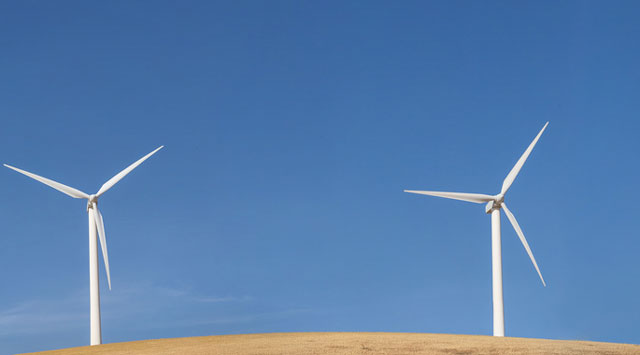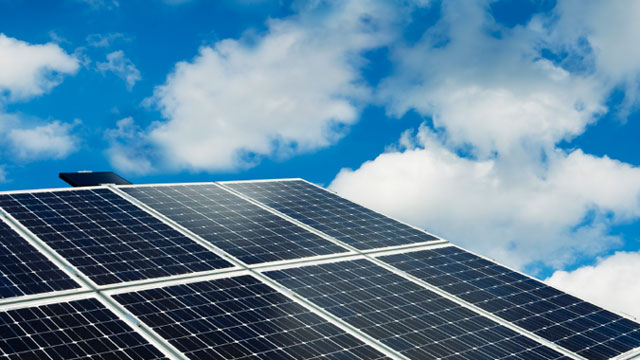
Normally futurologists, especially those who deal with the impact of climate change, paint a picture so dystopian that even Hollywood runs screaming for the hills. But at last week’s four-day climate change conference, hosted by the department of environmental affairs in Midrand, it was different.
This is what South Africa will look like by 2030: coal power stations will be switching off and renewable energy will be powering a third of the national grid. Nuclear and renewables together will provide half the power. The concentrated economy of today, based on mining and coal power, will be decentralised. People will have affordable local power, which they will own.
It is not a scenario dreamed up by some sandal-wearing idealist. It is contained in the government’s energy plans, discussed at the conference, although there was caution that these plans are still largely in theory.
“The infrastructure that we have is ultimately going to be decommissioned and we have an opportunity to change to a low-carbon future when this happens,” said Gina Downes, corporate consultant of environmental economics at Eskom.
The official energy plan, Integrated Resource Plan 2010, envisions a country where coal contributes 36GW of power by 2030. The whole grid will have increased in capacity to 61GW. Nuclear will provide 11GW, solar 9,8GW, concentrated solar 3,3GW, wind 4,4GW and hydro 3GW.
Hours of panel discussions in cavernous halls tackled the “how” of lowering South Africa’s carbon emissions. Per capita, it is the 11th highest emitter in the world. At the 2009 Copenhagen climate conference, it pledged to lower it emissions by 42% by 2025. The agreement was not legally binding and South Africa has started to build two new coal-fired power stations since then. Next year governments will sign an agreement at COP21 in Paris, which will legally compel them to lower emissions.
“The South African economy is overly reliant on the traditional minerals and energy complex,” said Khwezilomsa Mabasa of trade union federation Cosatu. Outright capitalism drove the economy, he said. The effects of climate change are felt mostly by the poor, yet it’s the rich who cause them.
Renewable energy presented a chance to change the entire structure of South African society. “Any scenario we [Cosatu] pursue will create a low-carbon and just society,” Mabasa said.
If the government followed its plans for renewable energy, reindustrialisation would occur. Renewable plants would create factories and drive climate jobs. Power would be taken away from an elite few and given to all the people, he said.
Jacklyn Cock, of the University of the Witwatersrand, said the “expansionist model of capitalism” still drove planning in South Africa. This had seen ambitious plans to embrace decentralised renewable energy watered down. The 4,8GW coal-powered Medupi and Kusile power stations had been built instead. These replicated the current political order, she said. “There is no sense that the current situation is unjust and unsustainable, and will get worse with climate change.”
A shift in the way energy is valued, so that it includes the likes of health costs, will drive a new type of industry in South Africa, said Prof Harald Winkler of the University of Cape Town. The economy focused on producing minerals. This would change, he said. “We need to promote higher value-added sectors and ambitious energy-efficiency targets.”
These ambitions are set out in the National Planning Commission’s “Vision 2030”.
But Tasneem Essop, one of its commissioners, said the hard decisions required to make the shift were not being made. Rather than progressing, economic players stuck to their “corners” and refused to “rise to the challenges” that the country faced, she said.
A clear example was the continued investment in coal. The International Energy Agency said last year that 80% of coal had to be left in the ground for the world to keep temperature increases below 2°C. By planning its economy on coal, South Africa was in danger of investing in assets that could not be used, she said.
Part of this is the uncertainty continually shown by the government when it came to renewables.

Joanne Yawitch, head of the National Business Initiative, said: “For a century we built one of the most fossil fuel-intensive economies in the world. We did it in a very focused way.” This meant South Africa had 42GW of coal power. “Now we are saying, change that, but we don’t have the ‘hows’ pinned down in any kind of substantive way.”
This criticism bedevilled a great deal of the climate meeting. Richard Worthington, a freelance energy expert, said a white paper on renewable energy was published in 1998. This said that an “equitable level of national resources” needed to be invested in renewable energy sources. But this had not gone anywhere until the 2008 energy crisis. Then a relatively small amount of renewables — 3,7GW — was commissioned.
“Our old view that renewables is a niche technology has held us back,” he said. The country should rather be planning to run on renewables. “We need to think of the world differently. A low-carbon world is not going to come about incrementally.”
Renewables on a large scale would drive a whole new economy. Without this kind of scale, the dream of a local industry and decentralised power would fail, he said. “For manufacturing, you need to prove there is a market at scale.”
Melita Steele, of Greenpeace Africa, said it seemed that renewables were a token thought in the energy mix. Each government department was doing its own thing. There was policy uncertainty. Decisions were made behind closed doors. And renewables were given artificial caps on how much was needed. “We are talking about moving to renewables by 2030. But we are already talking about delaying the decommissioning of our coal-fired fleet.”
Significant progress
But significant progress has been made. In 2008, there was no renewable energy programme. Now 3,9GW have been procured, with over 500MW already producing power. The country’s largest solar farm, producing 96MW, was turned on last week. Factories producing wind turbines have been opened.
Judy Beaumont, director-general of climate change and energy at the environment department, said this had all happened because of aspirational goals. “This was a launch into the future. A decision was taken on very little information and it has been a phenomenal success.”
Other government departments are also doing their bit. Public works minister Thulas Nxesi said his department was retrofitting thousands of government buildings to be energy and water efficient. By 2030, all new buildings would be carbon neutral.
But he also noted that it could only happen across departments. Factionalism would have to stop. “We cannot talk about turfs,” he said. “We will have to break the silos. We owe it to our children to exercise stewardship over the land.”
If this did not happen, the usually polite environment department indicated it would get pushier. Nosipho Ngcaba, its director-general, said it was struggling to get information about energy use and emissions from companies, and the energy department. This information was critical for moving from plans to implementation.
“The department of environmental affairs is considering climate change legislation to enforce some of the responses.” — (c) 2014 Mail & Guardian
- Visit the Mail & Guardian Online, the smart news source

